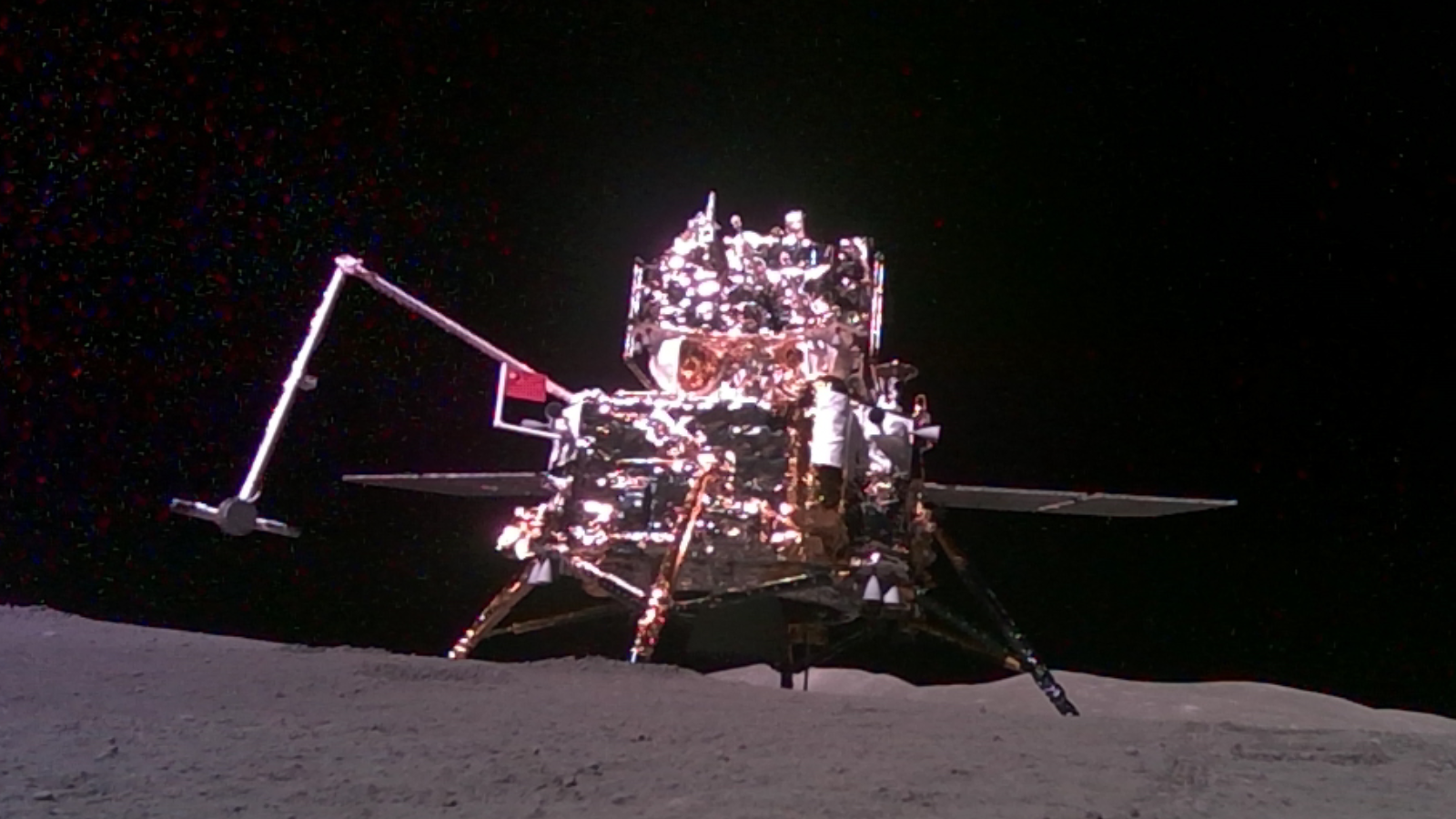
China has revealed details about a miniature rover tucked away on the country's pioneering Chang'e 6 lunar far side sample-return mission.
Chang'e 6 launched on May 3 on a Long March 5 rocket. While being a repurposed backup to the successful 2020 Chang'e 5 mission, it was revealed after launch that the new spacecraft also packed a surprise rover.
The Chang'e 6 lander touched down in Apollo crater with the South Pole-Aitken basin on June 1. The rover was deployed around two days later, after sampling operations on the moon had been completed.
The small, autonomous vehicle drove away from its parent craft and snapped an iconic image of the lander, topped with an ascent vehicle which would later blast the collected samples into lunar orbit. The image shows solar arrays, landing legs, a deployed sampling arm and a basalt Chinese flag.
The rover is highly capable and has significantly enhanced autonomous intelligence, stated its developer, the China Aerospace Science and Technology Corporation (CASC), according to the state-run media outlet Xinhua.
The rover autonomously detached from the lander, drove to a suitable position and selected an ideal angle for the photograph before capturing the image, according to the report.
The small vehicle represents "a significant stride forward in the development of autonomous intelligence in China's deep space exploration endeavors, promising a positive influence on future lunar exploration," according to CASC.
At approximately 11 pounds (5 kilograms), the rover is much smaller and lighter than China's first two moon rovers: Yutu and Yutu 2, part of the 2013 near side Chang'e 3 and 2019 far side Chang'e 4 missions, respectively. Each Yutu weighed around 310 pounds (140 kg). Yutu 2 is still active inside the moon's Von Kármán crater.
While China has not provided details, the Chang'e 6 lander and rover likely ceased operations when the ascent vehicle lifted off from atop the lander, blasting it with high-velocity exhaust. In any case, the lander and rover were not designed to survive the deep cold of lunar night that has since fallen over Apollo crater.
Chang'e 6 has been supported by Queqiao 2. The relay satellite bounced signals between ground teams and the spacecraft on the far side of the moon, which never faces Earth.
Chang'e 6 is expected to deliver around 4.4 pounds (2 kilograms) of precious lunar far side samples to Earth around June 25.







